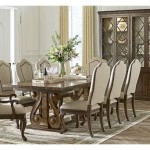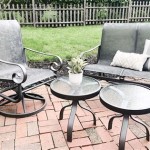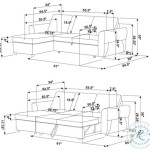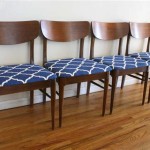Placing Furniture In A Living Room
Arranging furniture in a living room is a crucial aspect of interior design, as it significantly impacts the flow, functionality, and overall aesthetic appeal of the space. A well-designed living room layout facilitates comfortable movement, creates distinct zones for various activities, and maximizes the use of available space. The key to achieving an effective layout is to consider the size and shape of the room, the intended use, and the furniture pieces being incorporated. This article will delve into essential principles and practical tips for placing furniture in a living room.
Defining the Functionality
Before embarking on furniture placement, it is essential to define the primary functions of the living room. Is it primarily a space for relaxation, entertaining guests, or a combination of both? Understanding the intended use will guide the selection and arrangement of furniture. For instance, a living room designed for relaxation might prioritize comfortable seating and a coffee table, while a space for entertaining guests might include a larger sofa, additional seating, and an accent table for serving drinks. Consider the specific activities that will occur in the room and arrange the furniture accordingly.
Creating a Focal Point
Every living room benefits from a focal point, which draws the eye and anchors the overall layout. This focal point could be a fireplace, a large window with a scenic view, a statement artwork, or a unique architectural feature. Once the focal point is identified, position major furniture pieces, such as the sofa and chairs, facing it. This creates a sense of balance and directs the flow of the room. The focal point becomes the starting point for the furniture arrangement, ensuring that everything else complements and enhances its presence.
Balancing Symmetry and Asymmetry
The balance between symmetry and asymmetry is a key consideration in furniture placement. Symmetrical arrangements create a sense of formality and order, while asymmetrical layouts offer a more relaxed and informal feel. A symmetrical layout generally involves placing matching furniture pieces at equal distances from the center, creating a sense of visual harmony. Asymmetrical arrangements, however, allow for more flexibility, utilizing furniture pieces of different sizes and styles to create visual interest. The choice between symmetry and asymmetry depends on personal preference and the desired ambiance of the living room.
Utilizing Traffic Flow
Ensure that there is adequate space for movement throughout the living room. Create clear pathways for people to easily navigate between furniture pieces, avoiding any obstructions or cramped areas. Consider the natural flow of traffic in the room, such as entering and exiting the space, moving between seating areas, or reaching the fireplace or entertainment center. Maintain a comfortable distance between furniture pieces, allowing for easy passage and avoiding the feeling of being confined. A well-planned traffic flow creates a welcoming and functional space for everyone to enjoy.
Incorporating Scale and Proportion
The size and proportion of furniture pieces are crucial factors to consider when arranging them within a living room. Large furniture pieces can overpower a small space, while small pieces may get lost in a large room. Strive for a balance between the size of the furniture and the overall dimensions of the living room. Consider using a tape measure to determine the exact dimensions of the room and the furniture pieces before placement. Pay attention to the scale of the furniture in relation to the room's features, such as windows, doors, and fireplaces. Avoid overcrowding the space with too much furniture, as this can make it feel cluttered and uncomfortable.
Strategic Use of Furniture
Furniture placement should go beyond simply providing seating and storage. Consider using furniture pieces to create distinct zones within the living room. For instance, a sofa and coffee table can define a seating area for relaxation, while a console table placed behind a sofa can create a separate zone for displaying decorative items or storing books. Utilize furniture pieces to create boundaries, define spaces, and enhance functionality. A bookcase or credenza can be used to divide the living room from an adjacent space, creating visual separation and defining different areas within the room.
Embracing Flexibility
Living rooms are often the most versatile spaces in a home, serving multiple purposes and accommodating changing needs. Acknowledge the importance of flexibility in furniture placement, allowing for easy rearrangement and adaptability. Consider using modular furniture pieces that can be easily reconfigured, or choose pieces that can be moved without much effort. This flexibility allows for adapting the living room to different events, gatherings, or personal preferences without significant upheaval.
Experimenting with Arrangements
Furniture placement is ultimately a matter of personal preference and experimentation. There is no one-size-fits-all approach, and what works best for one space may not work for another. Do not hesitate to experiment with different layouts, try rearranging furniture pieces, and see what feels comfortable and aesthetically pleasing. Take pictures as you move furniture to visualize different arrangements. Seek inspiration from design magazines, websites, and home decor stores to gain insights into various furniture placement styles and techniques. Embrace the process of exploration and find what works best for your living room and your unique style.

How To Arrange Furniture In The Living Room Bighouse

How To Arrange Living Room Furniture With A Tv And Fireplace From House Home

How To Arrange Living Room Furniture Calgary

How To Arrange Furniture In A Long Living Room Setting For Four Interiors

4 Living Room Layout Ideas Easy Transformation

Arranging Furniture Twelve Different Ways In The Same Room

How To Place Furniture In Living Room All Questions Answered Hunner S Designs

7 Tips For Arranging Furniture In A Long Narrow Living Room

8 Practical Tips For Arranging Your Living Room Furniture La Z Boy Of Ottawa Kingston

How To Arrange Living Room Furniture Hgtv








